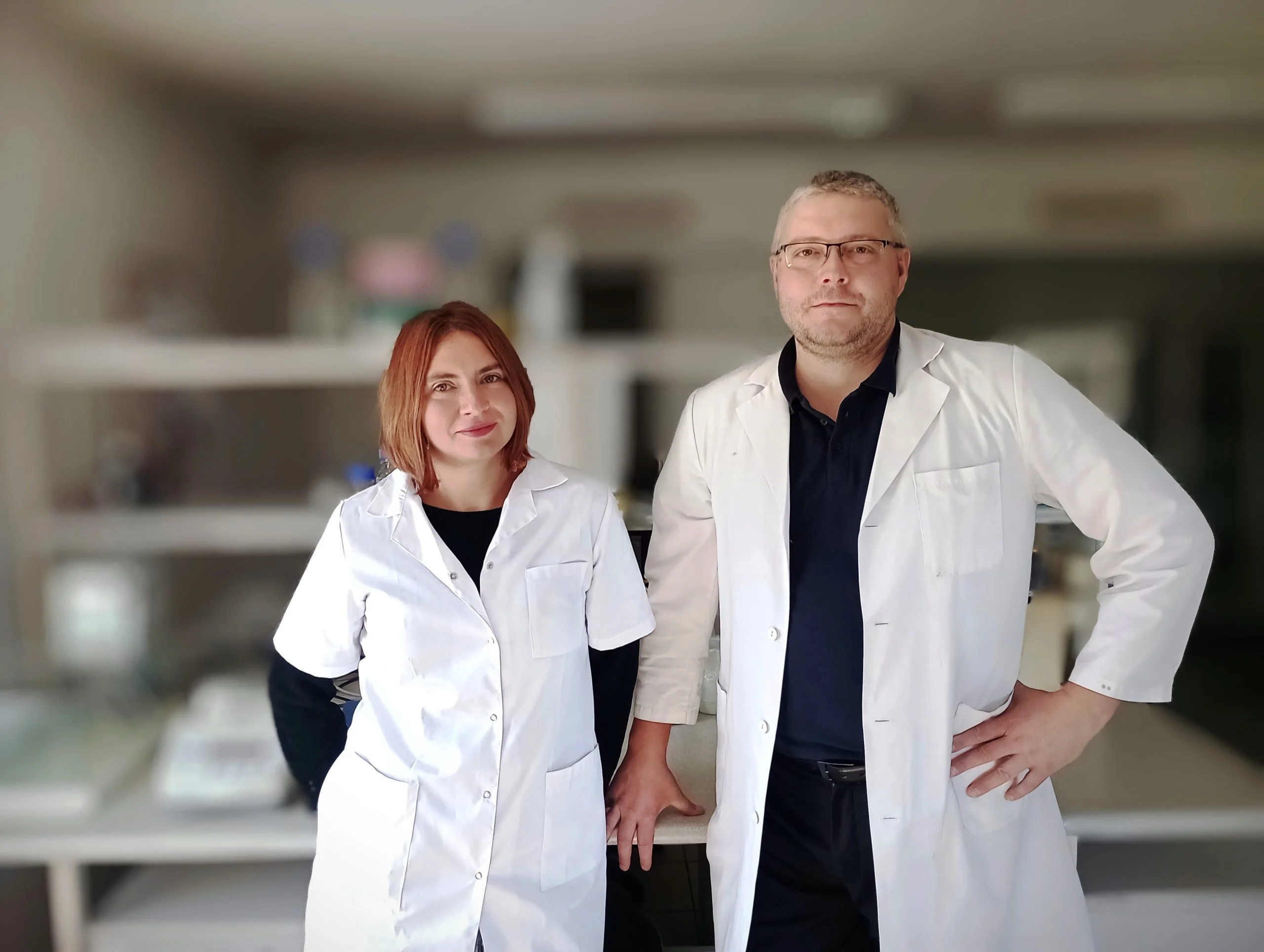
Our biologists on the effect of silver ions on biomaterials
Calcium hydroxyapatite is a major bone and tooth mineral that is used in implantology and dentistry to aid bone regeneration and treat bone and tooth defects. However, the introduction of calcium hydroxyapatite-based biomaterials into bone tissue requires surgical intervention, which carries the risk of infection. Researchers at the University of Wrocław, investigated how to reduce this risk.
The journal Scientific Reports published an article titled Effect of silver ion and silicate group on the antibacterial and antifungal properties of nanosized hydroxyapatite, presenting the results of a study focusing on improving the antimicrobial properties of modified biomaterials based on calcium hydroxyapatite doped with silver (Ag+) ions. Research on the subject is being carried out by an international team, whose members are dr hab. inż. Rafał Ogórek, prof. UWr and dr Agata Piecuch from the Department of Mycology and Genetics of the Faculty of Biological Sciences.
Calcium hydroxyapatite is the main mineral component of bones and teeth, making it an extremely biocompatible material. As a result, it is widely used in implantology and dentistry to aid bone regeneration and the treatment of osteochondral defects. However, the introduction of calcium hydroxyapatite-based biomaterials into bone tissue requires surgical intervention, which carries the risk of infection.
One of the agents that can prevent the unwanted consequences of the treatments performed from developing is silver (Ag0) and its ions, known for its strong antibacterial and antifungal activity.
The results of experimental studies have shown that silver ions released from calcium hydroxyapatite effectively inhibit the growth of gram-positive bacteria, gram-negative bacteria and yeast, thereby reducing the risk of developing potential infections.
These promising results will form the basis for further experiments focused on studying the biological activity against micromycetes and bacteria of calcium hydroxyapatite-based biomaterials doped and co-doped with precious metal ions. Their goal is to develop the best-performing structurally-morphologically modified biomaterials and their concentrations. It should be noted here that the published results are a continuation of previous research, which prof. Wiglusz’s team, together with prof. Ogórek’s team, patented in 2023 as invention number P.436311, entitled “Krzemianowy związek o strukturze hydroksyapatytu domieszkowany jonami srebra, sposób jego wytwarzania i zastosowanie”.
During the research, our scientists collaborated with the team of prof. dr hab. Rafał Wiglusz (dr Nataliia D. Pinchuk, mgr Natalia Charczuk, dr Paulina Sobierajska, dr Sara Targonska), who represent the Institute of Low Temperatures, PAS in Wrocław, Silesian University of Technology in Gliwice, and Cornell University in the USA, and who developed, fabricated and characterized modified biomaterials based on calcium hydroxyapatite. On the other hand, the task of team members from the UWr Department of Mycology and Genetics (dr hab. inż. Rafał Ogórek prof. UWr and dr Agata Piecuch) was to test their antimicrobial activity against strains of gram-positive and gram-negative bacteria, as well as against fungi of the Candida genus.
It is worth noting that members of UWr’s Department of Mycology and Dentistry also conduct research in classical, forensic and construction mycology, speleomycology, aeromycology, and molecular biology and fungal genetics. Molecular biology techniques are also being used to study mechanisms of fungal susceptibility and resistance to xenobiotics, as well as to assess the biological activity of new potential fungicides and cytostatics, including their cytotoxicity and genotoxicity.
Date of publication: 20.01.2024
Text: dr hab. inż. Rafał Ogórek
Added by: E.K.



